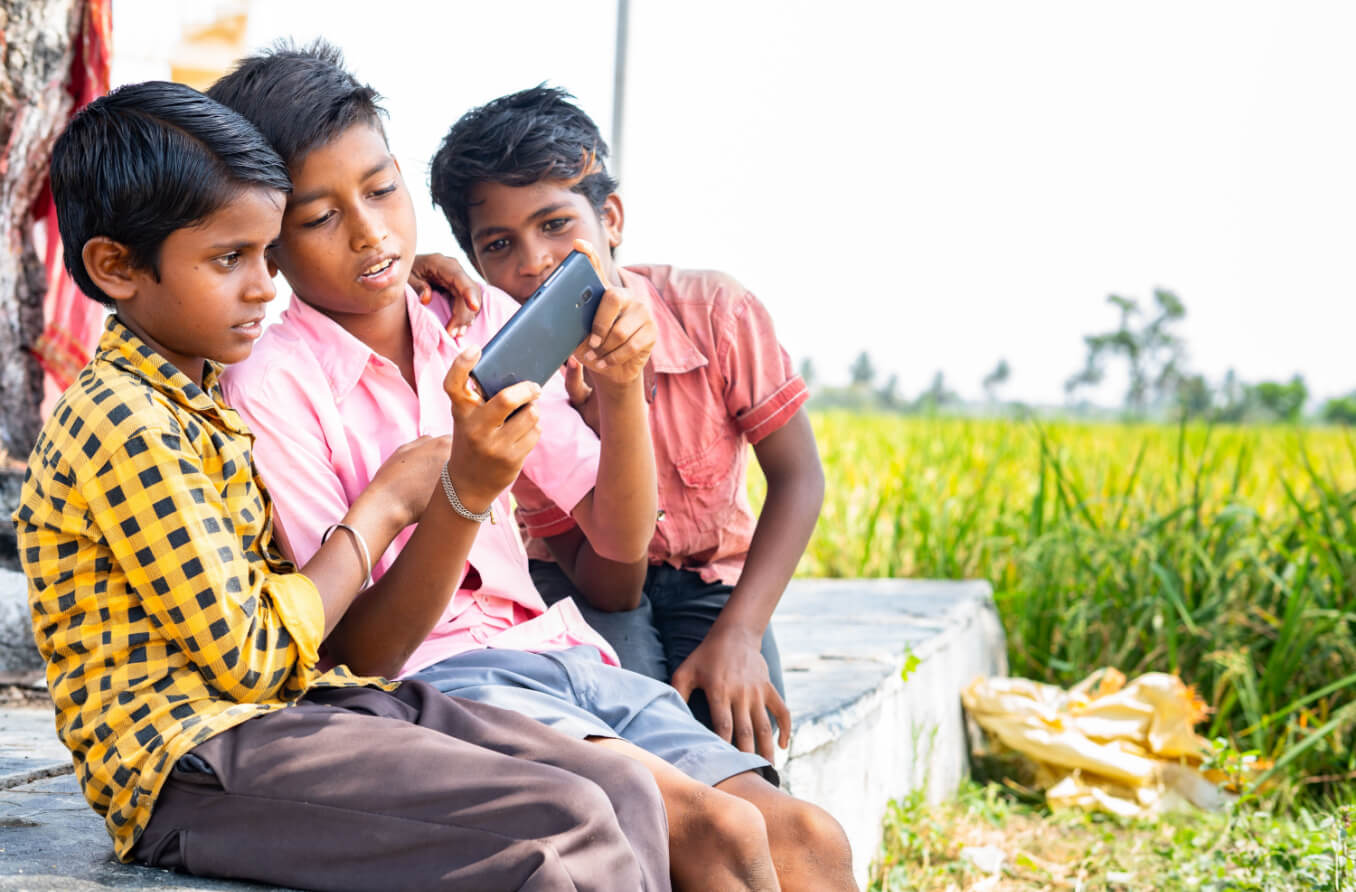Screen time for kids: How much is too much?

Children and their phones are inseparable today, and all that reading and playing games on their handheld devices may be harming their vision.
"Screen time" refers to the amount of time a person spends staring at the digital displays of computers, tablets (iPads, for example) and smartphones. Many studies find children routinely engage in more than two hours of screen time per day. And it's very likely most kids actually spend significantly more time staring at screens than their parents think they do.
Symptoms of too much screen time
Why might too much screen time be a problem for kids?
The Vision Council says 30 percent of parents find their children experience at least one of the following symptoms after spending more than two hours of screen time per day:
Headaches
Neck/shoulder pain
Eye strain, dry or irritated eyes
Reduced attention span
Poor behavior
Irritability
Any of these symptoms could potentially affect academic performance and social interactions.
The rapid rise of myopia, or nearsightedness, worldwide has been linked to increased use of and exposure to electronic devices.
In Singapore, for example, 65 percent of students in Primary 6 are myopic. In the United States and Europe, where myopia rates traditionally have been lower, around half of young adults now suffer from myopia compared with 25 percent in the 1970s.
Why blue light can be bad for you
The LED screens of computers and portable digital devices emit a broad spectrum of visible light. Most of these light rays are harmless, but a portion of the light emitted by these screens is relatively high-energy visible light called "blue light."
Blue light has shorter wavelengths and higher energy than other visible light rays. And laboratory research suggests that certain bands of blue light may be harmful to the light-sensitive retina of the eye over time.
Blue light also plays an important role in regulating our body's circadian rhythm. This basically is an internal clock that's running in our brain and cycles between alertness and sleepiness at regular intervals over a 24-hour period. It's also called our sleep/wake cycle.
Too much exposure to blue light at the wrong time of day can disrupt a person's normal sleep/wake cycle, which can have serious health consequences.
Risks of too much screen time for kids
Possible risks from too much screen time for kids can be categorized as immediate or long-term.
Immediate risks
Immediate risks from too much screen time generally occur relatively soon after repeated blue light exposure. Many of these risks are associated with circadian rhythm disruption caused by staring at digital screens well into the night, which can make it much harder to fall asleep at a normal time.
Sleep disruption can be especially problematic for children, leading to daytime drowsiness and poor performance in school because of it. Disruption of the sleep/wake cycle also can eventually lead to weight gain and obesity-related health problems.
Long-term risks
The simple truth is that the long-term risks of incremental blue light exposure from frequent use of digital devices is not yet known. This is because previous generations have not been exposed to comparable levels of blue light from digital devices from childhood.
It will probably take several decades before the long-term effects of extensive screen time for kids are better understood. But there is already some related research that suggests it may be wise to limit blue light exposure starting at an early age.
How to cut back on screen time
So then, what can a parent do to prevent harm to their child's eyes (and overall health) from too much screen time?
It's unlikely kids will reduce their use of digital devices. So the answer lies in taking steps to limit the amount of blue light reaching their eyes while they are using these devices.
Eyeglasses and sunglasses to reduce blue light
One solution is to purchase eyeglasses with lenses that reduce the amount of blue light that enters the eyes from computer, tablet and smartphone screens. A number of lens manufacturers produce eyeglass lenses that filter blue light.
Another option is to have an anti-reflective coating applied to the lenses that blocks blue light.
A third option is to purchase glasses with photochromic lenses. These sun-sensitive lenses block some blue light indoors and have the added advantage of automatically blocking additional blue light from the sun outdoors without the need for a separate pair of prescription sunglasses.
Yet another option — and the best option for superior protection from harmful blue light from the sun — is a pair of polarized sunglasses for outdoor wear.
Blue light filters to reduce exposure
But what if your child doesn't need prescription glasses? The most convenient option in this case is to purchase a protective blue light filter that can be applied to the surface of your child's digital devices.
Set limits on screen time
To reduce the risk of your child disrupting his or her sleep/wake cycle, create a "no-screens" rule at least an hour or two before their scheduled bedtime.
Or set a time limit on your child's phone use. Apple, Google and other tech companies have recently introduced time management features and apps that allow you to monitor your child's daily screen time.
Be proactive as a parent. Spend more quality time together and less screen time with your kid (or kids) left to their own devices. Better yet? Protect your child's vision while they're watching YouTube videos, posting photos or are playing games.
Finally, schedule annual eye exams with an eye doctor near you to monitor your child’s vision and eye health. And don't forget to ask your eye doctor about blue light protection options.
READ NEXT: 7 ways to reduce screen time during the pandemic
Page published on Wednesday, 27 February, 2019







